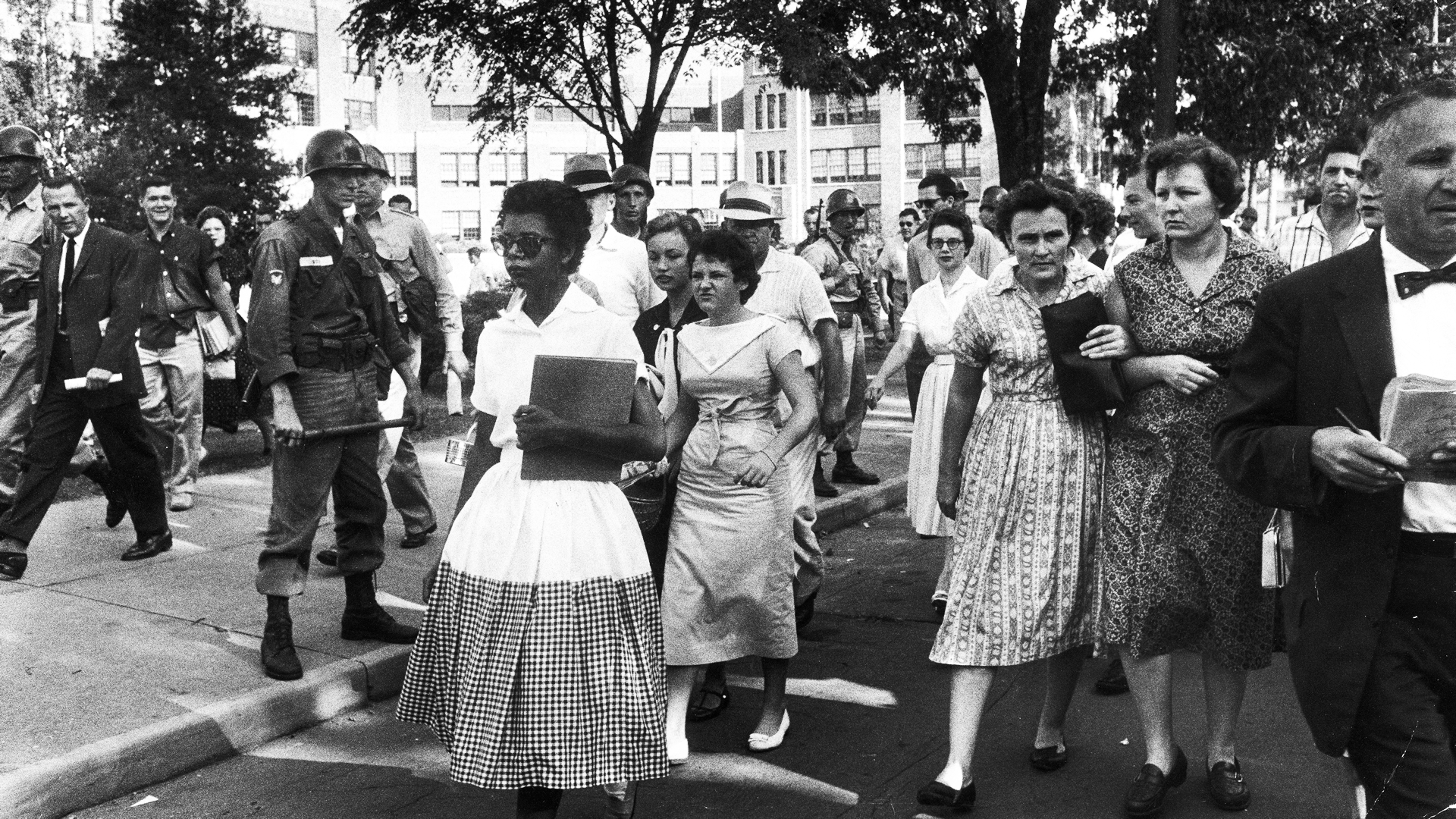Arkansas Troops Block the Little Rock Nine

Elizabeth Eckford, one of the Little Rock Nine, surrounded by an angry white mob outside Central High School in 1957.
What Happened?
The Supreme Court’s 1954 ruling in Brown v. Board of Education struck down segregation in public schools, declaring that 'separate but equal' was unconstitutional. But across the South, state officials resisted change. Little Rock, Arkansas became the proving ground.
Nine African American students—later known as the 'Little Rock Nine'—volunteered to integrate Central High School in 1957. They knew they would face hostility, but also understood the significance of their act of courage.
On September 4, Governor Orval Faubus defied federal authority by ordering the Arkansas National Guard to block the students’ entry. Faubus claimed the move was to 'maintain order,' but the soldiers’ bayonets were pointed at the children, not at the angry white mob.
As the students approached, a crowd of nearly 400 white protestors shouted, spat, and threatened them. Elizabeth Eckford, separated from the group, endured one of the most infamous ordeals—walking alone through a sea of hate, stoic in the face of violence.
The Little Rock Nine were forced to retreat, highlighting the clash between state defiance and federal law. For weeks, the crisis deepened as courts and officials wrestled with how to enforce Brown v. Board in the face of entrenched segregationist resistance.
The standoff reached President Dwight Eisenhower, who would later send federal troops to ensure the students’ entry. But on this September morning, the world witnessed just how far white supremacists and state leaders would go to keep schools segregated.
The events of September 4 exposed the limits of legal victories alone. Without enforcement, justice remained an abstraction. The courage of the Little Rock Nine forced America to confront its hypocrisy and showed that progress requires both law and action.
Why It Matters
The Little Rock Nine’s attempted entry on September 4 revealed the raw power struggle at the heart of civil rights. It showed that state leaders were willing to use soldiers to preserve segregation, and that children bore the cost of America’s resistance to equality. Their courage under fire became a defining image of the civil rights movement, proving that dismantling Jim Crow would require federal intervention and extraordinary personal bravery.
?
How did Brown v. Board of Education set the stage for the crisis in Little Rock?
Why did Governor Faubus use the National Guard to block integration, and what does this reveal about state resistance?
What role did Elizabeth Eckford’s solitary walk play in shaping public opinion?
How did this confrontation test the authority of the federal government over state governments?
What lessons does the Little Rock crisis teach about the gap between law and lived reality?
Dig Deeper
Bill Clinton reflects on the crisis in Little Rock and its role in shaping the modern civil rights struggle.
Related

The Civil Rights Movement: Struggle, Solidarity, and Social Change
From classrooms to courthouses, buses to bridges, the Civil Rights Movement reshaped America’s laws — and its conscience.

Jim Crow and Plessy v. Ferguson
After Reconstruction, the South built a legal system to enforce racial segregation and strip African Americans of political power. The Supreme Court’s Plessy v. Ferguson decision in 1896 made 'separate but equal' the law of the land—cementing injustice for decades.

MLK the Disrupter and the Poor People’s Campaign
Dr. Martin Luther King Jr.’s final chapter was about more than civil rights—it was a bold demand for economic justice that challenged the nation’s values at their core.
Further Reading
Stay curious!
